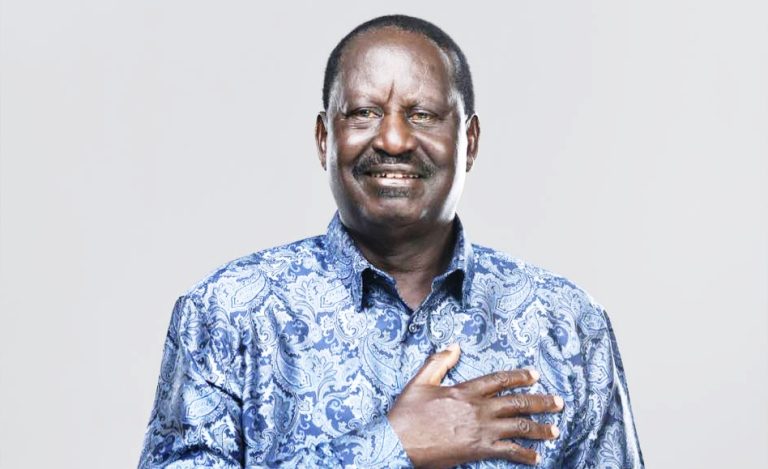Raila Amollo Odinga was not just a politician; he was a movement. Over five decades, he became the heartbeat of Kenya’s political evolution, symbolizing both resistance and reform. Known affectionately as “Baba”, he embodied courage, intellect, and defiance against political oppression. His passing at the age of 80 marked the end of an era for Kenya — the departure of a man whose story is inseparable from the country’s fight for democracy.
Early Life and Education: A Legacy Begins
Raila was born on January 7, 1945, in Maseno, Kisumu County, into the illustrious family of Jaramogi Oginga Odinga, Kenya’s first Vice President and one of the architects of independence. His mother, Mary Juma Odinga, instilled discipline and humility in her children. Growing up in a politically active home, Raila was introduced early to debates about justice, inequality, and freedom.
He attended Kisumu Union Primary School and later Maranda High School, before joining the Herder Institute in Leipzig, East Germany, through a scholarship. He later studied at the Magdeburg University of Technology, graduating with a Master’s degree in Mechanical Engineering. His exposure to socialist ideologies in East Germany would later influence his political thinking, especially his belief in social justice, equity, and people-centered governance.
Return to Kenya and Early Career
Upon returning home in the early 1970s, Raila became a lecturer at the University of Nairobi’s Department of Engineering. He later ventured into business, establishing the East African Spectre Ltd, a company specializing in gas cylinder manufacturing — one of the few African-owned industrial enterprises at the time.
While his career flourished, politics was never far from his heart. He was deeply disturbed by the authoritarian direction President Jomo Kenyatta’s government was taking, and later by the repressive rule of Daniel arap Moi, who took power in 1978.
The 1982 Coup and Detention Without Trial
In August 1982, junior members of the Kenya Air Force attempted a coup to overthrow Moi’s government. The failed coup led to mass arrests. Raila was accused of being part of the plotters — an allegation he consistently denied. He was detained without trial for six years, from 1982 to 1988, under brutal conditions.
During this period, he was tortured, kept in solitary confinement, and denied contact with his family. His wife, Ida Odinga, became a silent pillar of strength, raising their children — Fidel, Rosemary, Raila Jr., and Winnie — while advocating for his release.
Released in 1988, Raila was re-arrested in 1989 for political activism and again in 1990 after the assassination of Foreign Affairs Minister Robert Ouko, whose death sparked nationwide protests. In total, he spent nearly nine years in detention, making him one of Kenya’s longest-serving political prisoners.
Championing Multi-Party Democracy
The early 1990s marked Kenya’s Second Liberation. Global pressure for democratic reform coincided with internal agitation led by reformists like Kenneth Matiba, Charles Rubia, Masinde Muliro, and Jaramogi Odinga. Raila emerged as a fiery voice calling for pluralism.
He joined his father in the Forum for the Restoration of Democracy (FORD) — the main opposition movement pushing to repeal Section 2A of the Constitution, which had made Kenya a one-party state. Their efforts succeeded in 1991, restoring multi-party politics.
However, internal leadership wrangles split FORD into two factions: FORD-Kenya led by Jaramogi, and FORD-Asili led by Matiba. Raila remained loyal to his father’s faction, and when Jaramogi died in 1994, Raila became his natural successor. But power struggles within FORD-Kenya pushed him to leave and form the National Development Party (NDP) in 1996.
The Rise of the NDP and Alliance with KANU
Through the NDP, Raila reinvented himself. His populist message, fiery charisma, and direct connection to the grassroots resonated deeply with ordinary Kenyans. In the 1997 presidential election, he finished third behind Moi and Mwai Kibaki, cementing his place as a national political force.
In 2001, in a surprising twist, Raila merged NDP with Moi’s ruling KANU, becoming Minister of Energy. This alliance gave him insight into the inner workings of government and the state machinery he had long opposed. During his tenure, he expanded rural electrification, restructured Kenya Power, and introduced policies that made the energy sector more transparent.
However, as Moi prepared to retire in 2002, he attempted to anoint Uhuru Kenyatta as his successor — a move Raila vehemently opposed. He broke away from KANU, forming the Rainbow Alliance, which would evolve into the National Rainbow Coalition (NARC).
The 2002 “Kibaki Tosha” Revolution
Raila’s declaration “Kibaki Tosha!” at a rally in Uhuru Park became a defining moment in Kenya’s history. The phrase, meaning “Kibaki is fit,” unified the fragmented opposition under one banner. This coalition swept to power in December 2002, ending 39 years of KANU rule.
Although Raila played a crucial role in the victory, his relationship with President Mwai Kibaki quickly deteriorated. A secret Memorandum of Understanding (MoU) promising Raila and his allies key roles in the new government was allegedly ignored. Tensions grew, leading to the 2005 constitutional referendum, where Raila led the victorious “No” campaign, symbolized by the orange — the origin of the Orange Democratic Movement (ODM).
The 2007 Election Crisis and Power-Sharing Government
The 2007 presidential election was one of the most divisive in Kenyan history. Raila, leading ODM, faced off against Kibaki’s Party of National Unity (PNU). Early tallies placed Raila ahead, but the Electoral Commission of Kenya (ECK) declared Kibaki the winner, sparking violent protests nationwide.
The ensuing post-election violence left over 1,300 people dead and more than 600,000 displaced. Kenya teetered on the brink of civil war until a peace deal brokered by Kofi Annan led to the creation of a Grand Coalition Government in 2008. Raila became Prime Minister, sharing power with Kibaki.
During this period, Kenya witnessed significant reforms: the creation of the Independent Electoral and Boundaries Commission (IEBC), police restructuring, and most notably, the 2010 Constitution, which introduced devolution and redefined Kenya’s governance structure.
2013 and 2017 Elections: Unyielding Persistence
In 2013, Raila made his third presidential bid under the Coalition for Reforms and Democracy (CORD), losing narrowly to Uhuru Kenyatta. Though he challenged the results in the Supreme Court, the case was dismissed.
Undeterred, he ran again in 2017 under the NASA coalition. When the Supreme Court annulled the election results due to irregularities, it was hailed globally as a triumph for democracy. However, Raila boycotted the repeat election, citing the electoral body’s failure to implement reforms.
In January 2018, in a dramatic gesture of defiance, Raila took a symbolic oath as the “People’s President” at Uhuru Park, an act that nearly paralyzed the government. Yet, just two months later, he stunned the world by shaking hands with Uhuru Kenyatta in what became known as “The Handshake.”
The Handshake and the Building Bridges Initiative (BBI)
The handshake ushered in political calm after years of division. Together, Raila and Uhuru launched the Building Bridges Initiative (BBI), which aimed to address corruption, ethnic rivalry, and power concentration. While critics viewed BBI as a tool for political realignment, it showcased Raila’s ability to choose dialogue over discord.
Despite the Supreme Court’s nullification of BBI in 2021, the initiative left a mark on Kenya’s political discourse. It reaffirmed Raila’s enduring relevance and his commitment to peaceful solutions.
The 2022 Azimio Campaign and the Final Chapter
In 2022, Raila made his fifth and final presidential bid under the Azimio la Umoja One Kenya Coalition, with Martha Karua as his running mate. Supported by President Kenyatta, the campaign emphasized unity, anti-corruption, and economic reform. Despite his strong showing, Raila lost to William Ruto, marking another chapter of unfulfilled presidential ambition.
Though he never occupied State House, Raila’s influence remained unmatched. Beyond Kenyan borders, he served as the African Union High Representative for Infrastructure Development, spearheading projects like the Lamu Port-South Sudan-Ethiopia Transport Corridor (LAPSSET) and advocating for regional connectivity.
Death and Legacy of a Political Titan
When Raila Odinga passed away at 80, Kenya was plunged into mourning. From Kibera to Kisumu, from Nairobi to Namanga, millions poured into the streets waving orange flags and singing freedom songs. His funeral became a state affair — a fitting tribute to a man who defined the nation’s democratic journey.
Global leaders, from African presidents to Western diplomats, hailed him as a freedom icon, statesman, and symbol of unity. In his death, as in life, Raila Odinga bridged Kenya’s divisions.
The Enduring Legacy of Baba
Raila Odinga’s legacy transcends politics. He reshaped Kenya’s governance, empowered the opposition, and inspired a new generation of leaders. His philosophy of “No one is free until all are free” continues to echo across Africa.
To many Kenyans, Raila was the conscience of the nation — a man who refused to compromise principles for power. His life represents the story of Kenya itself: the struggle, the pain, the hope, and the enduring pursuit of justice.
Whether in prison or Parliament, in protest or peace, Raila Amollo Odinga remained the unyielding voice of Kenya’s democracy — a statesman who walked through fire and left behind a nation forever changed.



















